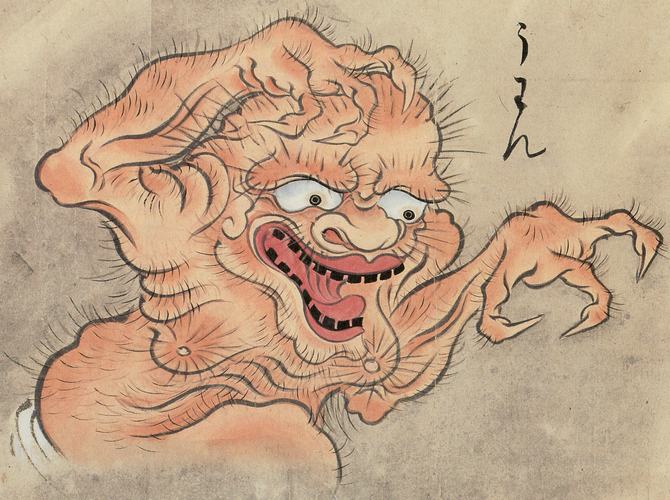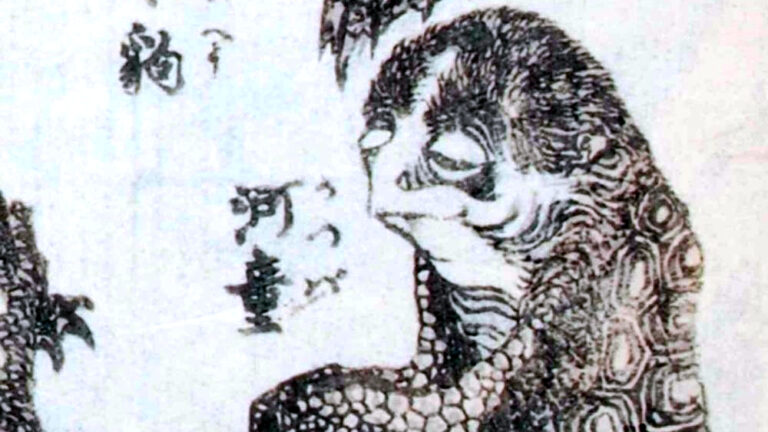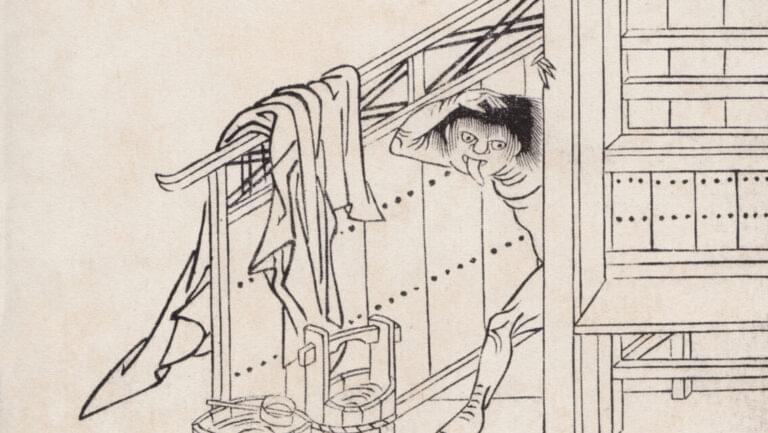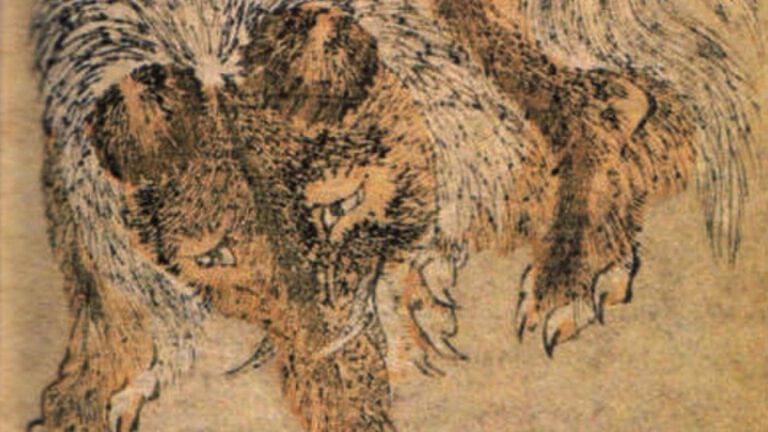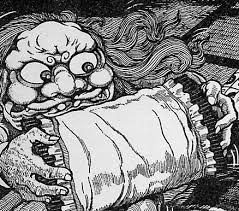
Introduction: A Personal Experience with Sleep Paralysis
Hey, hey everyone. This is Terrie and you’re listening to Uncanny Japan. It’s February, very gusty outside, but warmish for this time of the year. The plum blossoms are starting to bloom and the cherry blossoms are getting ready. And it’s roundabout’s my birthday. I have no plans. Except to get two episodes of the show out this month.
My job ended a month earlier than anticipated. Or shall I say I had to end my job earlier than anticipated. So quick before the bills start rolling in, some new shows and lots of Patreon content. Last time I talked about happy food basically. So today I want to delve into something a little more on brand for me. First, I have a question.
Have you ever gone to bed and been in that surreal space between awake and asleep? Not that place where you take a dreamy step and it feels like you’ve tumbled off a cliff. And you bolt awake heart pounding in your chest. But a place where without even realizing it, there’s this subtle charge in the air. Like a buzz almost. You’re wide awake again or at least you think you are. You can hear, you’re aware of the room around you, your bed against your back. But when you go to move, you’re frozen. You try to call out, but you can’t speak either. It’s quite a terrifying experience when it first happens to you.
It is, as you probably know, called sleep paralysis. I go through bouts of this every couple of years. Ever since I was really little and I kept catching pneumonia. That messed up my breathing and I guess my sleep. I was also a chronic sleepwalker for years. For me, it’s like sleep paralysis happens almost nightly for weeks. And then some other very weird, scary or wonderful things start to happen.
I’ve had times when I’ve heard voices talking to me, murmuring, whispering, shouting. I’ve heard singing and even strange and beautiful music being played as well. OBE or out of body experiences were also frequent at certain times in my life. I even had this brief period, probably a month or two, after returning to Japan after being very sick. When I had exploding head syndrome. That was freaky and terrifying until I looked it up and it eventually decided to go away. I’m really glad that one hasn’t returned.
But almost always, just as quickly as these things start, they just stop for months or even years. Knock on wood, I haven’t had a long bout of sleep paralysis or anything too weird in a while. And that’s kind of nice.
What is Kanashibari? Understanding Japanese Sleep Paralysis
A couple of quick facts that I just learned about sleep paralysis. Between 8 and 50% of people actually experience it sometime in their lives. And about 5% of people have regular episodes. And men and women are equally affected.
Now, before I learned the word sleep paralysis. This was again pre-internet, so the late 1980s, I believe. And I was describing what was happening to me to a Japanese friend who was studying at my university. And she said, “Oh, that’s kanashibari.” In Japan, lots of people get it, especially students studying for tests or anyone who’s under a lot of stress. So I literally thought that this phenomena happened to only me and a whole lot of Japanese students in Japan.
The kanji for kanashibari is pretty cool. “Kana” means metal and “bari” means to be tied up or bound. So, bound by metal. The word is originally a Buddhist term, though. But in order to get into that, let me take a side road and tell you about Fudō Myōō.
Fudō Myōō: The Immovable Buddhist Guardian Deity
In Sanskrit, it’s called ācala and is one of the Buddhist guardian deities, protecting both Buddhism and its followers. You’ll find images and statues of Fudō Myōō in temples and museums all over. Not just Japan, but in China, Tibet, Taiwan, Nepal. Fudō Myōō is very important in Vajrayāna or esoteric Buddhism. So in Japan, you’ll see his image in Shingon and Tendai temples, of course. But also, you’ll find Zen and Nichiren followers paying respects to him as well.
I know I’m going down a rabbit hole, but I think it’s important that you’re able to recognize Fudō Myōō, because he is so awesome and fierce looking. Even if you have never had or will never have the experience of kanashibari, you might very well come across the likeness of Fudō Myōō. And you can impress your family and your friends, perhaps, by recognizing him.
Okay, imagine a male deity, sitting cross-legged on a rock, engulfed in flames. The flames symbolize consuming all the evil in the world. Now his skin is dark indigo or black. He’s scowling, brow furrowed. One fang pointing up, one fang pointing down. He’s also got a squinty left eye and a long braid hanging over one shoulder. He’s holding a sword in his right hand that symbolizes cutting through ignorance and delusion. While a rope or a lasso is in his left, it is with this that he ropes in violent passions and evil. Fudō Myōō is hardcore. He’s also known as the Immovable One.
And back in the day, he was beloved by samurai as a guardian figure. And even today, it seems like some people who are members of the Yakuza have adopted his image via tattoos as a kind of representation of strength of body and mind. His depiction works best as a full back or chest tattoo. Seriously, if you search for Fudō Myōō and tattoo, you’ll see some really beautiful, amazing pieces out there.
The Buddhist Connection: Fudō Myōō’s Rope and Kanashibari
Okay, no, I haven’t forgotten where we started. Sleep paralysis, kanashibari. Remember the rope that Fudō Myōō is holding in his left hand? It’s called a kensaku. On one end, it has a round metal piece and on the other, a small pointed metal piece. If you’re looking at a colored image of him, it will be a braided rope of five colors. This is what he uses to tie up demons and rescue suffering beings.
There is a sutra actually called the Kanashibari-ho. And it is from this and that image of being tied up with this rope that the name of the phenomena derives, kanashibari. While now when you look around for anything related to kanashibari online in Japanese, so many of the sites talk about the science behind it and not how it used to be viewed. But it’s not hard to imagine that people used to believe that sleep paralysis was a kind of possession. Possibly by a kitsune, fox, or a tanuki, or some other malevolent force.
Makuragaeshi: The Mischievous Pillow-Flipping Yōkai
Also, have you ever heard of a makuragaeshi? Now I’m personally quite fond of makuragaeshi, and I’ve written about them quite a few times. So let’s take another detour and talk about them for a bit.
A makura in Japanese is a pillow, and a gaeshi or kaeshi means to change or to turn. So a makuragaeshi is a yōkai that waits until someone is deep asleep and then appears only to slip the pillow from under their head and move it to the foot of their futon. These guys are very thin and ugly. They have long stringy hair. Well, overall, they’re very freaky looking.
Some stories say that they are spirits of dead people who have died in that room. For example, travelers who have lots of money spend the night in an inn and then are murdered by the innkeeper who just wants to steal their wealth. Usually, though, they’re just mischief makers.
Makuragaeshi Folklore and Regional Variations
Kizen Sasaki, the folklorist, writes that not only do they mess with your pillows, they can also lift up tatami mats and press on your sleeping body. In Gunma Prefecture, the belief is that a cat transforms into a kasha, which is a kind of monster. And its job is to make someone who is sleeping with their head facing an easterly direction to turn and face the opposite, face west.
There is also another creepy belief that when you dream, your soul leaves your body. And if, while you’re dreaming and your soul is absent, someone or something moves your pillow, then your soul will not be able to return. So be careful.
The Connection: Makuragaeshi and Kanashibari
Also, those makuragaeshi are thought to cause kanashibari. So there’s this other thing that’s related to a kanashibari, but that’s a whole other can of worms. So I’m going to talk about that next time.
So today I’m going to end with sleep paralysis, kanashibari, Fudō Myōō, the Immovable One, and the adorable, freaky looking makuragaeshi or pillow flipper. The next episode, I’ll get into a personal story and how I learned about another visitor who can come while you’re lying paralyzed and helpless in your futon, unable to even scream for help. But that’s next time.
Support Uncanny Japan
So I’m sending a great big thank you to all my patrons. You are absolutely wonderful. Whether it’s my two year anniversary on Patreon or my birthday, or that I’m getting dangerously close to 50 episodes, I’m still giving away stickers to every patron who wants one, old or new. There are also lots of bedtime stories up there, binaurally mic sounds, behind the scenes shows, and as well, recently I’ve been doing a lot of recipes, so I’m going to start getting those up on the page as well. Thank you everyone for listening and I will talk to you again very soon. Bye bye.

